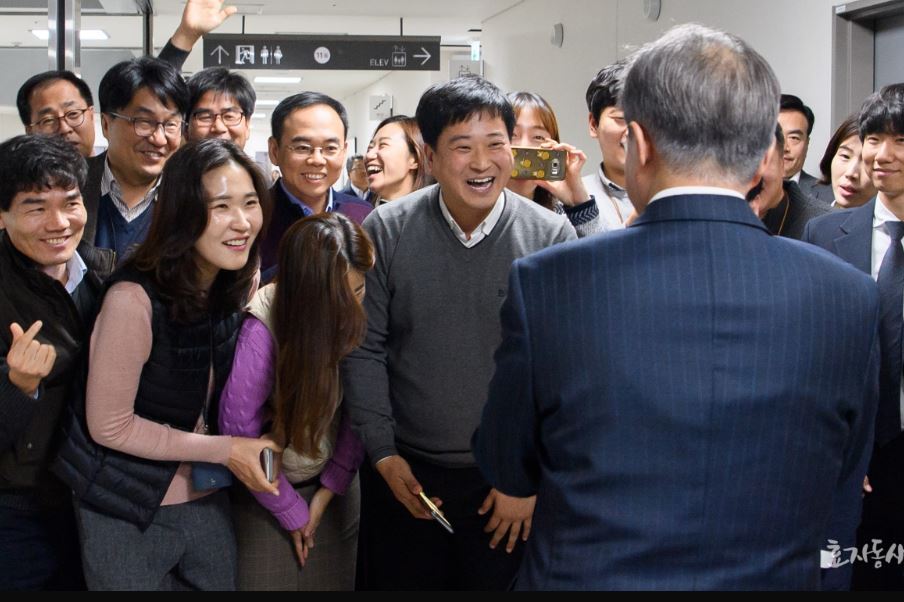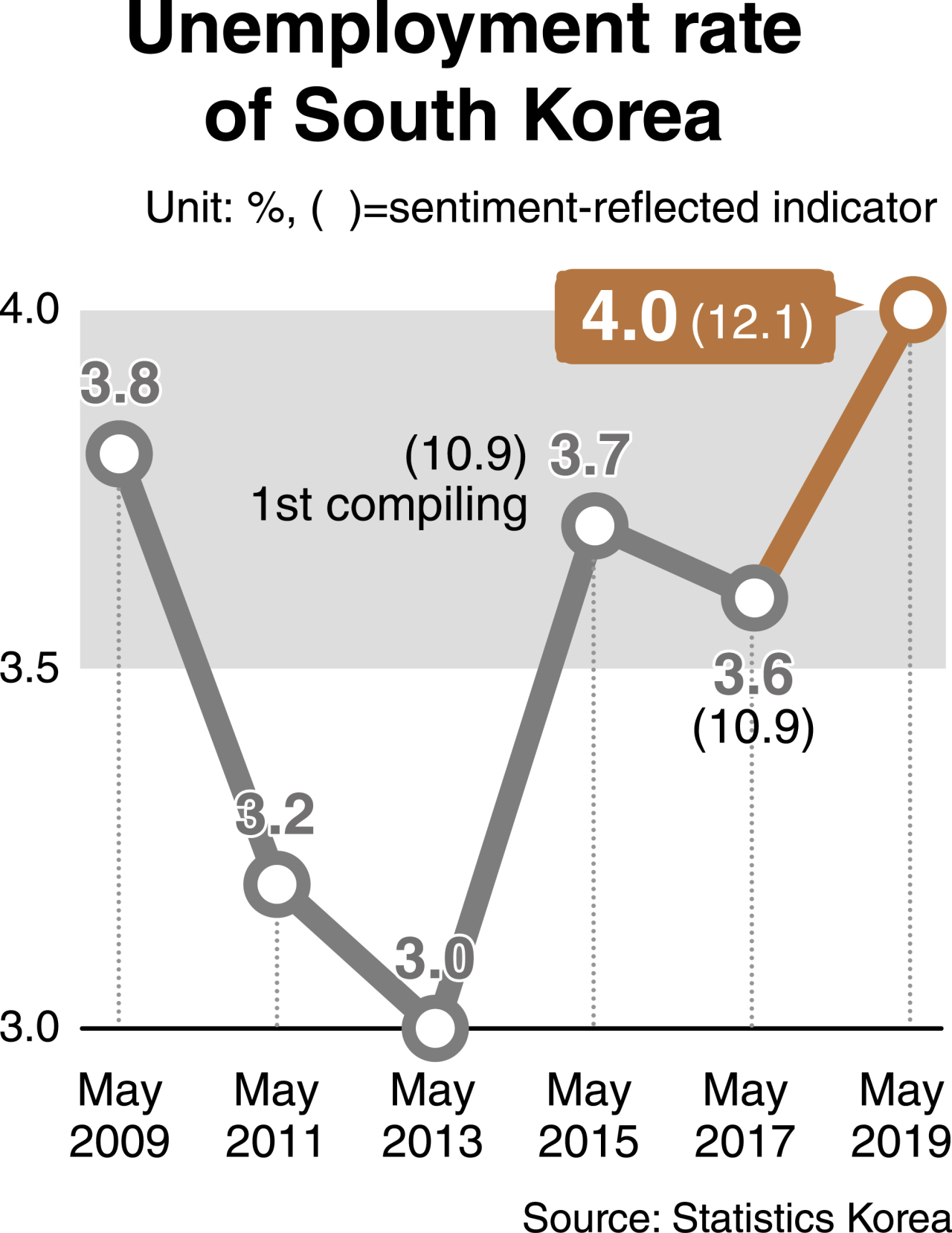SEJONG -- An election campaign pledge of President Moon Jae-in early 2017 was to create 1.31 million jobs -- 500,000 in the private sector and 810,000 in the public sector.
At that time, he criticized the theory that employment should follow market principles, saying that “the (next) government (unlike past administrations) will be able to create up to 1.31 million jobs by taking the initiative (not by handing it over to the market).”
In addition, he suggested that parents with preschool children should work from 10 a.m. to 4 p.m. until their children go to elementary school, compared to the ordinary working hours of 9 a.m. to 6 p.m.
He pledged that the government would compensate small and medium-sized enterprises for possible damages from the slashed working hours.
After being elected as the 19th president of Korea, he kept his pledge to a certain extent as the National Assembly backed by the ruling Democratic Party passed a motion on the revision to Labor Standards. It guidelines the shortening of statutory working hours from 68 hours a week to 52.
 |
President Moon Jae-in meets with civil servants at the Ministry of Labor and Employment during his visit to the Government Complex Sejong in Eojin-dong on Dec. 11, 2018, to deliberate on the 2019 policy directions. (Cheong Wa Dae) |
But Moon has yet to fulfill his other pledges involving a rise in employment, though he commented on the weakness in job-related indices during his meeting with senior secretaries at Cheong Wa Dae last year.
As a presidential candidate, he had denounced former President Lee Myung-bak for pouring taxpayers’ money worth 22 trillion won ($19 billion) into the four-river refurbishment project. “It is equivalent to the money that can be used to create one million jobs with a yearly salary of 22 million won,” he said.
Over the two years since taking office, the Moon administration has reportedly allocated more than 50 trillion won in taxpayers’ money for raising employment -- higher than the 33 trillion won arranged during the previous Park Geun-hye administration.
Now many question the efficacy and whereabouts of the government funds for nominal job creation.
The number of jobless people came to 1.145 million in May 2019, up 24,000 from 1.121 million a year earlier, according to Statistics Korea.
This also marked an increase of 150,000 unemployed (15 percent) over the past two years, compared to 995,000 in May 2017, when Moon took office.
“The number of jobless citizens is higher than 10 years ago when the nation was hit by the global financial crisis,” said an analyst in Seoul. “Korea saw the unemployment rates for the first five months of 2019 stay higher than the corresponding period of 2009.”
From January to May in 2009, the jobless rate was 3.6, 3.9, 4, 3.8 and 3.8 percent in turn. But the figures for the same period of this year reached 4.5, 4.7, 4.3, 4.4 and 4 percent.
For the remaining seven months (from June to December) of 2009, the figure also continued to stay under 4 percent.
Based on the statistics for each May over the past decade, only for the latest two years -- 2019 and 2018 -- posted 4 percent. The unemployment rate for the corresponding month ranged between 3 percent and 3.8 percent from 2009 to 2017.
Given that the May figure also ranged between 3.1 percent and 3.7 percent from 2001 to 2008, the current jobless rate is the highest in 19 years since it peaked at 4.1 percent in May 2000.
 |
(Graphic by Heo Tae-seong/The Korea Herald) |
When it comes to the “sentiment-reflected” jobless rate, the hiring market is more serious.
The sentiment-reflected (or extended) unemployment involves temporary employees with less than 36 hours work a week who want to change jobs, and those out of work for certain periods despite eligibility.
Statistics Korea provides the sentiment-reflected jobless rate, dubbed the “supplementary index III for employment,” which reached 12.1 percent in May 2019.
The figure is higher than 11.5 percent in May 2018, 10.9 percent in May 2017, 10.7 percent in 2016 and 10.9 percent in May 2015 (when the state-run agency started compiling data).
After posting 11.6 percent at the end of 2018, the supplementary index III has ranged between 12 percent and 13.4 percent during the January-May 2019 period.
Earlier this year, the Finance Ministry proposed a bill on an extra budget worth 6.7 trillion won to the National Assembly. Its allocation for the employment sector out of the budget comes to 1.8 trillion won with a goal of creating 73,000 jobs.
By Kim Yon-se (
kys@heraldcorp.com)





![[Herald Interview] 'Trump will use tariffs as first line of defense for American manufacturing'](http://res.heraldm.com/phpwas/restmb_idxmake.php?idx=644&simg=/content/image/2024/11/26/20241126050017_0.jpg)

![[Health and care] Getting cancer young: Why cancer isn’t just an older person’s battle](http://res.heraldm.com/phpwas/restmb_idxmake.php?idx=644&simg=/content/image/2024/11/26/20241126050043_0.jpg)

